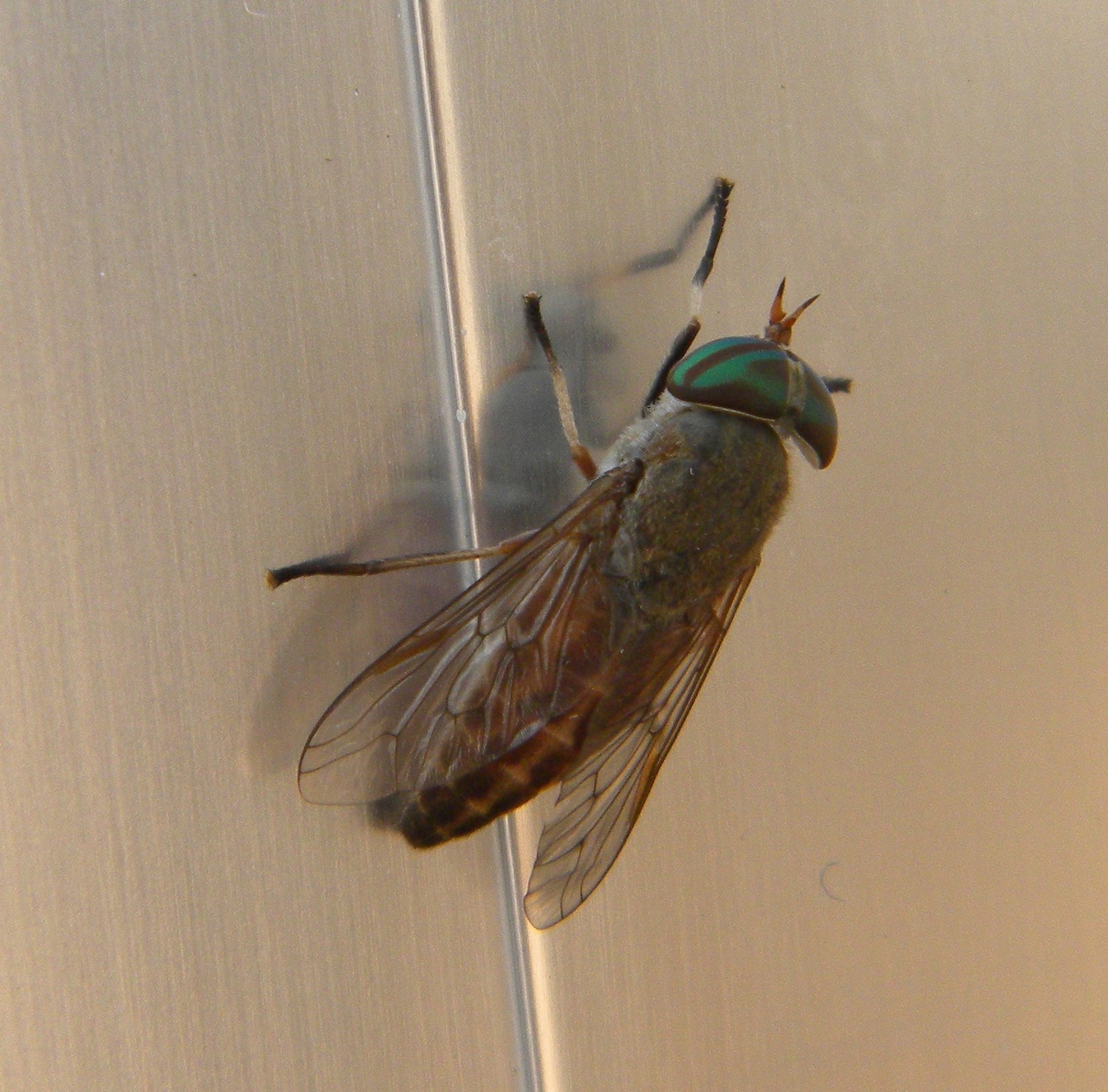Greenhead horseflies send Oceanside Pool patrons packing
Residents say they have been driven away by the pests for years
When Bruce Bider, a lifelong Oceanside resident, visited the Oceanside pool recently, he said the once-thriving community hub of his youth looked like a “ghost town.”
“It was one of the hot spots, if you will,” he said of the Hempstead Town pool he frequented during his adolescence in the late 1970s and early ’80s. “People used to go there a lot. It used to be very crowded.”
But on that day, in a week when temperatures averaged around 90 degrees, he said no one was in sight except for the handful of lifeguards on duty. Bider said he initially assumed — having not visited in a number of years — the inactivity was due to families squeezing a vacation in during summer’s waning days. When he approached one of the lifeguards, however, she gave him a different answer.
She reported that attendance had been low at the pool, not just for the entire summer, but for the past several years, so much so that pool staff had not opened the snack bar this year. When asked why, he said, she gave a simple, two-word answer — green flies.
Bider took to Facebook to see whether fellow Oceansiders agreed, posting to a private community page dedicated to discussing happenings around town, and the response was overwhelming. The post generated nearly 120 replies, almost all of which said the same thing — that for years, the green flies, which cause painful bites that leave welts, had driven them and their children away.
Another resident, Patricia Amthor Justin, wrote that she had paid the $8 entrance fee to drop her son and friends off at the pool, and that they lasted about 45 minutes before they left. “The green flies were horrendous,” she wrote. “So many people complain that there is nothing for the kids to do. This would be a great thing if it weren’t for those flies.”
“Generally, [the Oceanside Pool] has not been as well frequented as other pools,” said an employee at the pool who said he had worked at various town pools for the last six years and who declined to give his name because he was not authorized to speak to a reporter.
“People have their own pools,” he explained, “and it’s a bit isolated compared to the Newbridge Road pool in Bellmore and the Veterans Memorial Park pool in East Meadow, which are more centrally located . . . we also get a lot of complaints about the green flies.”
Town spokesman Michael Fricchione said that the Town Parks and Recreation Department reported that attendance at the Oceanside pool was down, particularly in the past two years, and that town officials have been aware of the problem.
They have installed 60 traps in nearby wetlands, where the flies are known to gather, with six installed nearby the Oceanside facility on Aug. 1.
He said that Town Supervisor Laura Gillen was committed to adding more traps the following season “in order to better protect residents from the pesky, nuisance flies.”
‘Pesky’ bloodsuckers
Bordered on two sides by salt marshes and neighboring the Marine Nature Study Area, the Oceanside Pool is located centrally within the flies’ — officially, greenhead horseflies — breeding ground, according to entomologist Michael Deutsch, who works for the Lynbrook-based Arrow Exterminating.
He said that the flies — called horseflies because of their size — are non-invasive, meaning they are native to the area, and that they breed in the reeds and tall grasses of the nearby wetlands.
The female flies require blood, animal or human — or a “blood meal” as Deutsch indelicately described it — in order to become fertile enough to lay eggs, and becomes aggressive in the process, tracking down anything that moves.
Deutsch said the greenhead flies differ from other winged pests such as mosquitoes in how they extract blood from their victims. Their mouths, he said, consist of “sabers,” which they “criss-cross” to mutilate the skin and extract the blood. “That’s why it’s so painful,” he said of the bites. “As soon as the blood appears out of the laceration, they suck it in. It happens in a flash.”
He said he was unaware of any spikes in the flies’ population in recent years, but noted that breeding conditions this summer, where it has been hot and humid, have been favorable. “As far as they’re concerned, it’s the equator here,” Deutsch said. “The conditions are prime for them to populate.”
He said he was also unsure of the effectiveness of the traps the town has been placing — a black box with an open bottom and a netted top. They are intended to lure the flies with a dark color, and they enter from below and are then unable to escape through the netting. He noted, however, “There’s no research to see how well they work.”
The only remedy known to be effective, Deutsch said, would be to spray the marshlands with pesticides, but because they are protected lands, doing so would violate the state Tidal Wetlands Act of 1973. He recommended that residents struggling with the flies protect themselves with eucalyptus oil, picaridin or a 35 percent concentrate of DEET, or diethyltoluamide.
The flies, Deutsch said, are not known to carry disease, but regardless, “These guys are a big pain.”

 47.0°,
Overcast
47.0°,
Overcast 




